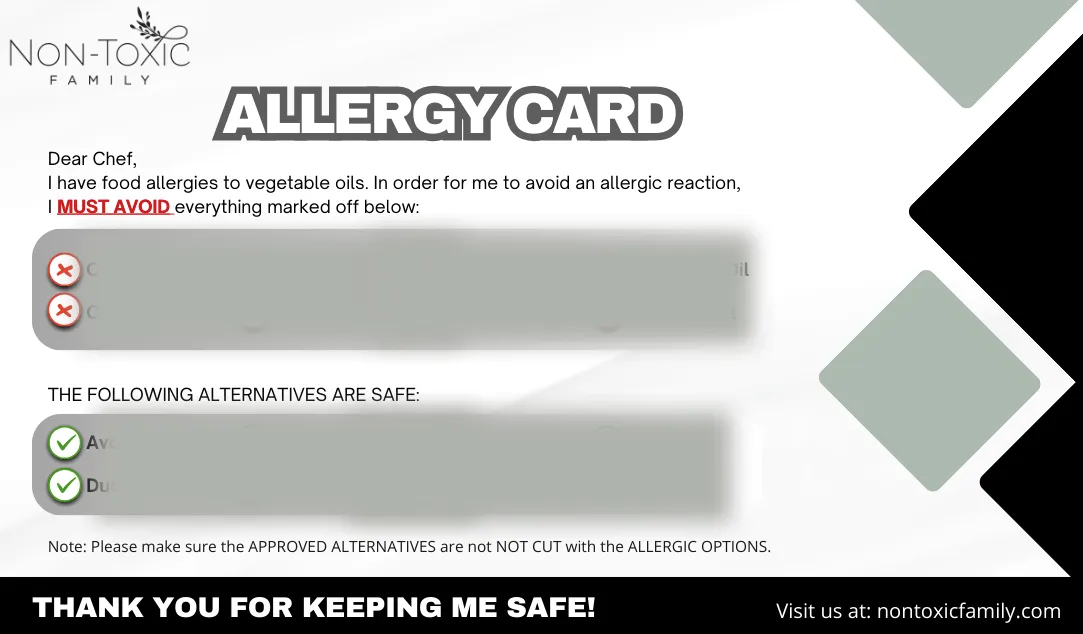Our Non-Toxic Family To Your Own
You’ll be surprised by what’s in your pantry, fridge, medicine cabinet, cleaning closet, and makeup bag.
What to watch out for...
GET THE VEGETABLE OILS ALLERGY CARD, 100% FREE.
WORRIED ABOUT SEED OILS IN RESTAURANT FOOD?

MASA CHIPS
Traditional tortilla chips, without the seed oils made by ancient crunch
Use the coupon code "KYLE" to get a discount
ABOUT

Welcome to Non-Toxic Family, your go-to resource for creating a healthier and more sustainable lifestyle for you and your loved ones. At Non-Toxic Family, we believe in the power of informed choices to transform our homes into havens of well-being.Action Headline

Over 4 Million+ Views | 400+ Episodes


